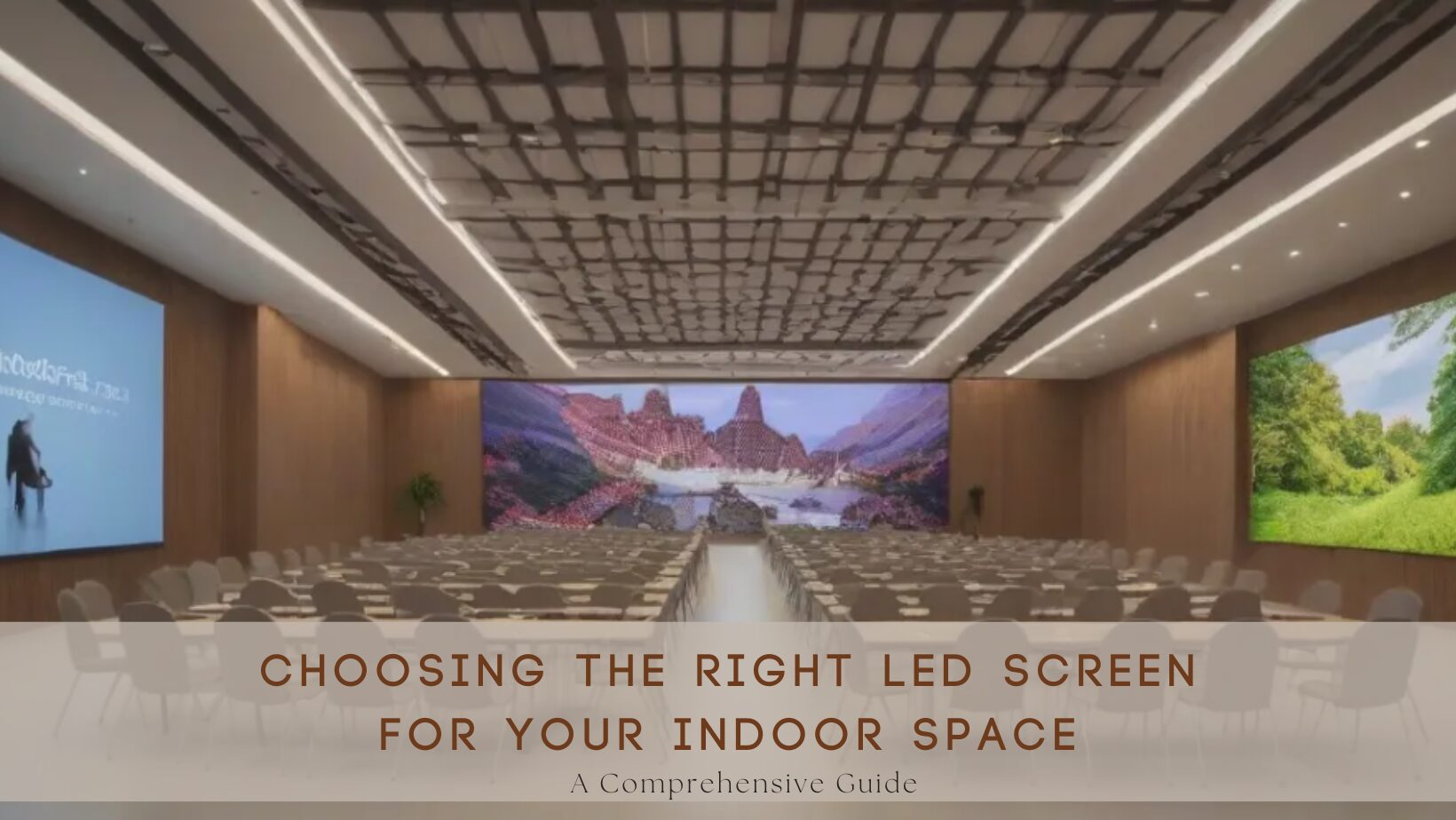In the ever-evolving world of display technology, LED screens have become a staple in various indoor environments, ranging from homes and offices to retail spaces and entertainment venues. As consumers seek to enhance their visual experiences, the task of choosing the right LED screen can be both exciting and daunting. In this comprehensive guide, we’ll explore the key factors to consider when selecting an LED screen for your indoor space.
Understanding the Basics
Resolution Matters
When it comes to LED screens, resolution is a critical factor that directly influences the clarity and sharpness of the displayed content. Understanding terms like Full HD, 4K, and 8K is essential. Assess the viewing distance and the size of the screen to determine the optimal resolution for your space. LED screens involves assessing viewing distance, considering screen size, and choosing a resolution that aligns with the intended use. By doing so, you ensure that your LED screen delivers the clarity and sharpness needed to make the most of your visual content in any indoor space.
Brightness and Ambient Light
Indoor environments vary in terms of lighting conditions. Consider the ambient light in the space where the LED screen will be installed. Brightness is measured in nits, and a higher brightness level is crucial for areas with abundant natural light. Striking the right balance ensures a vibrant and visible display.
Size and Aspect Ratio
Choosing the right screen size and aspect ratio depends on the purpose of the display and the available space. Consider the viewing distance, content type, and the layout of the room. An improper size or aspect ratio can affect the overall visual appeal and user experience. Finding the right balance between screen size and resolution is essential. A smaller screen with a high resolution can be just as visually impressive as a larger screen with a lower resolution. It’s about matching the resolution to the screen size to create a harmonious and visually appealing display.
Tailoring to Your Needs
Content Type and Display Technology
Different LED screens are optimized for specific types of content. Understanding your intended use—whether it’s for gaming, movies, presentations, or digital signage—helps in selecting the right display technology. OLED, QLED, and MicroLED are popular options, each with its unique advantages.
Color Accuracy and Gamut
For applications that demand color precision, such as graphic design or video editing, consider the color accuracy and gamut of the LED screen. Look for displays that support a wide color spectrum and offer calibration options to ensure true-to-life colors.
Refresh Rate for Dynamic Content
Gamers and fast-paced content enthusiasts should pay attention to the refresh rate. A higher refresh rate results in smoother motion and reduced motion blur. LED screens with high refresh rates are ideal for gaming setups and home theaters.
Practical Considerations
Connectivity and Compatibility
Ensure that the LED screen has the necessary ports and connectivity options to accommodate your devices. HDMI, DisplayPort, and USB-C are common connectors. Additionally, check for compatibility with media players, gaming consoles, and other devices you plan to connect.
Smart Features and User Interface
Smart LED screens come with built-in features like streaming apps, voice control, and integration with smart home systems. Assess the user interface and ease of navigation to enhance the overall user experience.
Durability and Build Quality
Depending on the location within your indoor space, the LED screen may be exposed to various environmental factors. Consider screens with robust build quality, protective coatings, and, in some cases, water resistance for longevity.
Budgeting Wisely
Setting a Realistic Budget
Navigating the world of LED screens involves not only understanding the technical specifications but also being mindful of your budget. Here’s why setting a budget is crucial and how to strike the right balance between features and cost; LED screens come in a wide range of prices, and setting a budget is crucial. Consider your requirements and prioritize features that align with your needs. While it’s tempting to go for the latest and greatest, balancing features with cost ensures a satisfying investment. LED screens indeed come in a diverse range of prices, and the first step in your selection process should be establishing a realistic budget. Consider your financial constraints and define a budget range that aligns with your overall investment goals.
Prioritizing Features Based on Requirements:
Once your budget is in place, carefully assess your requirements. Identify the specific features that are essential for your intended use. For example, if you prioritize image quality, allocate a significant portion of your budget to a higher resolution or better color accuracy. Understanding your needs helps in prioritizing features that truly matter to you.
Balancing Features with Cost:
While it’s tempting to opt for the latest and most advanced LED screens on the market, it’s essential to strike a balance between features and cost. Not all cutting-edge features may be necessary for your use case. Evaluate the cost implications of each feature and determine whether the additional expense aligns with the value it brings to your specific requirements.
Conclusion
Choosing the right LED screen for your indoor space involves a careful consideration of various factors, from technical specifications to practical aspects that enhance the user experience. By understanding your specific needs, assessing the environment, and keeping an eye on technological advancements, you can make an informed decision that brings your indoor space to life with a stunning visual display. Remember, the perfect LED screen is not just about the latest technology; it’s about how well it fits into your unique indoor environment.


No responses yet